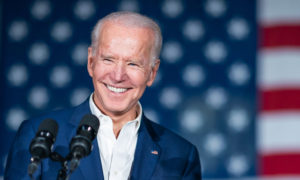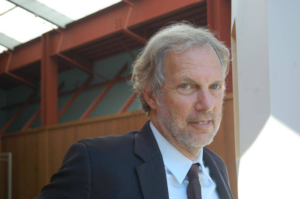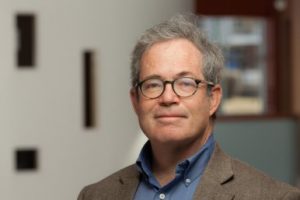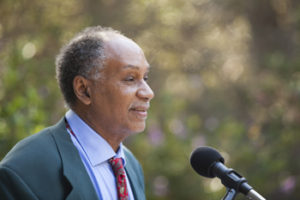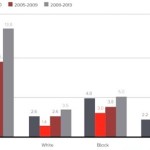Biden’s $1.9 Trillion Stimulus Is A Vital Beginning For A New New Deal
In his first three days in office, President Joe Biden signed no less than 30 executive orders and memorandums, many of which dismantle Trump’s policies. This is an impressive achievement by any standard, but only so much can be done with executive orders and it is all but certain that most legislation will be blocked by Republican senators, thanks to filibuster, and with the possible help of some Democrats. In the meantime, Biden has proposed a $1.9 trillion stimulus for the coronavirus-hit economy which includes, among other things, a third relief check, extending unemployment benefits, setting aside $400 billion for a nationwide vaccine program, expanding the child tax credit and raising the minimum wage to $15 per hour. One could say that Biden’s economic plan is inspired by FDR’s New Deal because nothing like it has ever been introduced during peacetime. But what exactly does this economic plan mean for households, for business and for climate change? What will be the impact of the stimulus on public debt? And what about reforms for the financial sector, which continues to reap huge profits when millions of Americans are struggling? Two progressive economists, Robert Pollin and Gerald Epstein, co-directors of the Political Economy Research Institute at the University of Massachusetts at Amherst, address some of these questions in an exclusive interview for Truthout.
C.J. Polychroniou: Bob, the pandemic, in addition to having killed more than 400,000 Americans so far, thanks to Trump’s reckless response, has had a severe impact on the U.S. economy: business closures, massive unemployment, huge decline in the gross domestic product, increase in multiple kinds of inequality. Obviously, with those disturbing realities in mind, Joe Biden has released an economic plan to combat COVID-19 and get the country back on track which, according to many analysts, is inspired by FDR’s New Deal. Can you talk a bit about Biden’s economic plan and offer your assessment with specific reference to how it will support individuals, households and business through the pandemic?
Robert Pollin: The Biden administration has introduced a $1.9 trillion short-term economic stimulus program. It targets six main areas of spending: $1,400 in cash payments for people whose income is less than $75,000; $400 per week in supplemental unemployment insurance for laid-off workers; major support for state and local governments that are right now staring, collectively, at budget deficits of $500 billion or more; a major increase in spending on distributing COVID vaccines; and expanding the tax credit for families with children.
The total package amounts to about 9 percent of the economy’s overall level of activity — i.e., gross domestic product (GDP). This proposed Biden stimulus would also be on top of the $900 billion measure — equal to about 4 percent of GDP — that Congress and the Trump administration passed in December, as well as the $2 trillion package — equal to 10 percent of GDP — that was implemented last March. So, if the Biden proposal passes, it would mean that over the past 10 months, the federal government stimulus would add up to roughly 23 percent of GDP. And on top of that, since March, the Federal Reserve has purchased over $3 trillion in bonds — a 74 percent increase over their holdings as of last February — from Wall Street firms to bail them out and to keep pushing interest rates down on home mortgages, business loans and government bonds.
Overall, this level of economic stimulus since the COVID pandemic spread last March — which would amount to more than one-third of total GDP if the Biden proposal passes — has been historically unprecedented during peacetime. The only comparable level of government intervention was during World War II, when government deficit spending reached as high as 25 percent of GDP. But, of course, that spending was focused on fighting a world war.
The point, however, is that this level of public spending included in the current Biden proposal is absolutely necessary and, for that matter, will not be sufficient given the severity of the current economic crisis. Over the past nine months, 74 million people have filed to receive unemployment insurance. This is equal to fully 45 percent of the U.S. labor force. Meanwhile, as of the most recent data, nearly 20 percent of all U.S. households with children report that their families didn’t have enough to eat over the past week. That figure rises to 24 percent for African American households. Similarly, 26 percent of households with children report that they are unable to keep up with their rent. Amid all this, the Dow-Jones Industrial Average stock market index is up an incredible 68 percent since the initial stimulus program passed in March, thanks to both the stimulus and the Fed bailout having successfully propped up Wall Street.
Combating climate change seems to be one of the central objectives of Biden’s administration. How does Biden’s plan compare to the Green New Deal, especially the version of a “green economy” you have been fighting for over a decade now?
Pollin: The combined government spending injections since last March — totaling to roughly one-third of all spending in the economy if the current Biden proposal passes — don’t include a single dime to address the climate crisis. This is while we now know that 2020 was the second-hottest year on record. Biden has emphasized that he is going to take major action to address the climate crisis. Specifically, he has said that he will introduce a huge public investment-led program soon, that will be over and above the short-term stimulus measure to fight COVID and the ongoing recession.
On Wednesday, Biden signed a series of executive orders that will, among other things, suspend oil and gas leasing on federal government lands, transition the federal government’s stock of automobiles and trucks to an all-electric fleet, and create an Environmental Justice commitment in federal policies that will “address the disproportionate health, environmental, economic and climate impacts on disadvantaged communities.” Most broadly, Biden’s climate directive commits his administration to move the U.S. onto “an irreversible path to a net-zero economy by 2050.”
Nevertheless, for the most part, Biden has still not laid out his full-scale program for achieving the net-zero emissions goal. For now, we still need to look at what Biden proposed during the presidential campaign as a guide. That included both some positive as well as some seriously negative points. On the positive side, first, the overall level of investment spending that Biden proposed to deliver a zero-emissions economy by 2050 is in broad alignment with what I, as well as other researchers, have suggested is necessary. That is about 2-3 percent of GDP every year until we have built a clean energy infrastructure in the U.S., as well as contributed in a major way to building it throughout the rest of the world. For the next couple of years, that would mean about $400 billion per year in investments in the U.S. alone, including from both private as well as public sources.
Biden’s campaign proposal did also recognize the fact that building a clean energy economy will be a major new source of job creation throughout the economy, for people working in all kinds of jobs. Within this framework, Biden emphasized that labor unions will need to play a major role in ensuring that the jobs that are generated — upwards of about 4 million new jobs in total in the initial years — will be good-quality jobs, with decent wages, benefits and working conditions, and that women and people of color are included in getting their fair share of these newly generated opportunities. Finally, Biden’s campaign proposal did include just transition policies to support the workers, as well as their families and communities, who are now dependent on the oil, coal and gas industries for their livelihoods. Biden did also reemphasize this focus on creating good-quality union jobs in Wednesday’s directive. So far, so good.
On the down side, the Biden campaign proposal gives high priority to so-called carbon-capture technology and nuclear energy as major new sources of zero-emissions energy supply. Under carbon-capture technology, we keep burning coal, oil and natural gas to provide energy, but the technology entails literally capturing the carbon before it enters the atmosphere, and transporting it into gigantic underground storage areas, to presumably remain there for all time. The fossil fuel companies love this idea, since it keeps them in business. But at best, the technology remains unproven at commercial scale, despite decades of trying by the companies who desperately want it to work. Nuclear energy also presents huge public safety problems as well as being very expensive, despite having operated as an electricity source for 60 years now.
We need to insist that the centerpiece of the Biden climate program be investments to dramatically expand the supply of clean renewable energy sources — including solar, wind, geothermal, small-scale hydro and low-emissions bioenergy — along with investments to dramatically raise energy efficiency standards with public transportation, electric vehicles running on renewable energy and net zero energy buildings. That is the cleanest, cheapest and safest way to deliver a zero-emissions economy, and to do so in a way that greatly expands job opportunities.
Jerry, Biden’s plan for sparking the economy has some folks concerned because it will obviously increase the public debt, although Treasury Secretary Janet Yellen played down the debt issue in her confirmation hearings. Is there a need to be worried about deficits and a public debt surge when the economy is weak and millions of Americans are struggling? Moreover, how would you assess the Federal Reserve’s response to the COVID-19 crisis so far, and what else can the Fed do to revive the U.S. economy?
Gerald Epstein: Rich countries, especially those like the United States that can easily borrow at home and abroad in its own currency (the U.S. dollar is the main global currency), have a great deal of capacity to borrow for public spending. This is especially true when the cost of borrowing (interest rate) is well below the likely return on investment, as measured, for example, by the rate of growth of the economy. And now, U.S. interest rates on government debt is at historically low levels, below 1 percent in many cases. Keynesian and progressive economists have long understood this fact, but it has taken two major economic crises in the span of little more than a decade to convince even centrist and liberal economists and Democratic policy makers of this truth. Of course, Republicans, at least since Reagan, have understood that, when they are in power, they should have the government borrow a lot to fund tax cuts for the wealthy and subsidies for their pet constituencies, and then they should become austerity hawks when the Democrats are in power to block their initiatives and popularity. And of course, true to form, that is exactly what Mitch McConnell and the Republicans are doing now with respect to Biden’s spending initiatives. And, as usual, some of the right-wing Democrats are parroting these Republican talking points.
It is important to note that this capacity to run deficits and borrow is not absolute; it is best to be used to help achieve full employment, to deal with national health and other emergencies, to invest in green transformation and the positive support for the poor, people of color and working class. And it is many of these targets that the Biden administration and Democratic leadership in Congress are trying to reach with their spending initiatives. (Of course, they continue to propose spending excessive amounts on the military, as well.)
Chomsky: Coup Attempt Hit Closer To Centers Of Power Than Hitler’s 1923 Putsch
Even as the Biden administration takes the reins of power, the fact remains that authoritarianism and a fascist strain of political thinking have taken firm root on U.S. soil among a large proportion of its citizens. This utterly disturbing development will, according to Noam Chomsky in this exclusive interview for Truthout, be hard to contain. A recent poll shows that the overwhelming majority of Republicans continues to give a thumbs up to Donald Trump, even after the storming of the Capitol. In the wake of the attempted coup, and on the cusp of a new administration, what do the current political currents mean for the future?
C.J. Polychroniou: Noam, you had been warning all along of a potential coup in the event that Trump would lose the 2020 election. In thiscontext, are you surprised at all by what took place on Capitol Hill on the Electoral College vote count?
Noam Chomsky: Surprised, yes. I’d expected a strong reaction from Trump’s voting base, raised to a fever pitch by his latest antics. But hadn’t expected the attempted coup to reach this level of violence, and I suspect most of the participants didn’t either. Many seemed to have been caught up in the excitement of the moment when the leaders of the crowd surged into the hated Capitol to drive out the demons who were not just “stealing the election” but “stealing” their country from them: their white Christian country.
That it was an attempted coup is not in question. It was openly and proudly proclaimed as just that. It was an attempt to overturn an elected government. That’s a coup. True, what was attempted was not the kind of coup regularly backed by Washington in its dependencies, a military takeover with ample bloodshed, torture, “disappearance.” But,nevertheless, it was an attempted coup. True, the perpetrators regarded themselves as defending the legitimate government, but that’s the norm, even for the most vicious and murderous coups, like the U.S.-backed coup in Chile on the first 9/11 – which was actually much worse in virtually every dimension than the second one, the one that we remember and commemorate. The first one is best forgotten on the principle of “wrong agents”: Us, not some radical Islamic fundamentalists.
The emotions of those attempting the [Capitol] coup were apparent.Belief that the election was stolen was plainly held with real fervor. And itis understandable among people who live in passionately pro-Trump areas where he is revered as their savior, and for some, even chosen by God, as he once declared. Many may scarcely have seen a Biden sign, or heard anything from Fox News or Rush Limbaugh to suggest some possible flaw in their beliefs.
In some respects, these beliefs are not as bizarre as they may look at first. A shift of tens of thousands of votes in a few counties might have swung the election the other way in a deeply undemocratic system such as ours,where 7 million votes can be swept aside along with an unknown number of others eliminated by purging, gerrymandering, and the many other devices that have been devised to steal the election from the “wrong people,” effectively authorized by the Supreme Court in its shameful 2013 decision nullifying the Voting Rights Act (Shelby County v Holder).
As we’ve discussed before, the malevolent figure in charge deserves credit for his talent in tapping the poisonous streams that run not far below the surface of American society, with sources that are deep in U.S.history and culture.
White Freedom: An Interview With Tyler Stovall
The idea of freedom has a contradictory legacy in the modern western world: it’s all about whiteness mixed with practices of racial inequality and discrimination, argues Tyler Stovall, Distinguished Professor of History, Emeritus, at the University of California at Santa Cruz, in his newly published work White Freedom: The Racial History of an Idea (Princeton University Press, 2021). In the interview that follows, Tyler Stovall discusses the main thesis of his book, highlights the difference in the way conservatives and progressives view freedom, and talks the return of white supremacy in American politics.
C. J. Polychroniou: You have just published a new book, titled White Freedom: The Racial History of an Idea, in which you argue that freedom has been defined in the western political tradition in racial terms. Can you elaborate a bit on this thesis?
Tyler Stovall: I argue that in America, France, and other Western societies in the modern era freedom is central to white racial identity and that whiteness is an essential component of freedom. To be free is to be white, and to be white is to be free. The book explores how societies based on liberty, like the French and American republics, could without contradiction also practice racism against peoples of color because those who were not white by definition could not be free.
It also shows how the clarion call of liberty in these societies derived its force in part from its appeal to race.
CJP: Didn’t gender and class also play key roles in the social construction of freedom?
TS: Since those are not the primary subjects of this book my answer to this question is necessarily limited, but class and gender certainly also played an important role. One need only consider the history of voting as a political right in the modern era. In many Western democracies the franchise was only gradually granted to people without property, and until the twentieth century it was almost universally reserved for men. The right to property, a key component of freedom in capitalist societies, was also highly gendered, and more generally if one did not have property (the case of most working people in the modern era) one could not truly be free.
CJP: Isn’t it also the case that freedom has always meant something different to conservatives and progressives?
TS: To a certain extent, yes: conservatives have traditionally focused on individual liberty and negative ideas of freedom, freedom from, whereas progressives have tended to emphasize the freedom of groups from oppression based on class, race, gender, and other identities. I would say, however, that in many ways the conservative, individualistic interpretation of freedom has been dominant during the modern era, and that conservatives are more likely than progressives to foreground ideas of freedom in their politics. Many progressives give greater importance to equality than freedom, for example. Also, if you consider the very idea of liberal democracy, which I consider a kind of compromise between these two approaches, conservatives stress liberalism and progressives stress democracy.
CJP: Racism not only remains a major problem in American society, but race relations seem to have gotten worse over the last few years. In fact, we have seen the return of white supremacy in U.S. politics during Donald Trump’s reign of rage and destruction. What’s your explanation for this unsettling socio-political development which threatens the very fabric of American democracy?
TS: I’m not sure I agree with the basic premise of this question, because I don’t think that white supremacy ever went anywhere, and I don’t think it’s necessarily worse now than in the past. For example, what strikes me most about the Black Lives Matter movement is how many whites support it, in a way that would have been hard to imagine ten years ago. That said, there certainly remains lots of racism in American society, and I think it is due to the combination of two factors.
First, American society and culture are growing more multicultural and diverse, and second the living standards of many Americans, including working class whites, have declined significantly since the 1970s. Traditionally in American society lower class whites who had very little property or social status could take comfort in their whiteness and white privilege, but now that seems to many to be increasingly jeopardized. Those whites who invaded the Capitol building on January 6, 2001 felt that their communities and their futures were threatened by the new contours of American life, and as we have seen in such situations people react violently.
CJP: Given the thesis of your book, namely, that racism and freedom are intertwined in the western political tradition, isn’t there a need therefore to redefine freedom?
TS: I would say rather that it is important to reinforce universal ideas of freedom that have also existed in the West, and bolster their rejection of white freedom. For example, in my book I discuss the ways in which the Statue of Liberty has been an icon of white freedom, symbolizing the ability of European immigrants to achieve white privilege in America. My preferred solution to that would not be to take down Lady Liberty, but rather to underscore other kinds of liberty. The Statue of Liberty and the myths around it tend to obscure the fact that New York was one of America’s great slave ports, so why not have another statue in New York harbor that commemorates slave rebellions in New York as symbols of liberty? Many people in America and throughout the world have rejected white freedom and fought for liberty for all, and it’s important to honor their struggles.
—
C.J. Polychroniou is a political economist/political scientist who has taught and worked in universities and research centers in Europe and the United States. His main research interests are in European economic integration, globalization, the political economy of the United States and the deconstruction of neoliberalism’s politico-economic project. He is a regular contributor to Truthout as well as a member of Truthout’s Public Intellectual Project. He has published several books and his articles have appeared in a variety of journals, magazines, newspapers and popular news websites. Many of his publications have been translated into several foreign languages, including Croatian, French, Greek, Italian, Portuguese, Spanish and Turkish. He is the author of Optimism Over Despair: Noam Chomsky On Capitalism, Empire, and Social Change, an anthology of interviews with Chomsky originally published at Truthout and collected by Haymarket Books.
Essay Essentials Forensic Expertise. About the Ideal of an NFI – Handbook on Forensic Expertise
Introduction
This essay [1] is an unorthodox attempt to write a handbook on forensic expertise [2]. My intention is to bring about a real improvement of understanding for all criminal justice professionals, the “users of forensic expertise” in criminal procedure; in my opinion a timeless and very useful ideal.
In the light of my recent attendance at trials of 24 Dutch criminal cases it has become clear to me that, in almost every criminal case, a greater understanding and clearer explanation is desirable of natural sciences as practiced in technical laboratory research and executed on traces within the Netherlands Forensic Institute (NFI) in the truth-finding process in criminal law. The name for this kind of research into traces as part of the criminal process is Criminalistics.
Criminalistics is the natural scientific aspect of the forensic sciences. It focuses on natural scientific research on evidence on behalf of truth-finding in criminal law. And It is directed towards the significance of the results of such research for that truth-finding. [3]
The explanation of an expert in court (art. 339, paragraph 1, sub 4), and the expert’s report, the written documents (art. 339, paragraph 1, sub 5 ) are the two different kinds of legal evidence, regarding the expert. Limited to these and combined with the judge’s own observations, the declarations of the suspect, and the declarations of a witness (art.339, paragraph 1, sub 1, 2, and 3), these five constitute the – limited – means of legal evidence as recognized in the Dutch Code of Criminal Procedure.
Even though forensic research is also carried out by other authorities, such as the Police, (semi) private institutes, – laboratories, – individuals and Universities, I have decided to take the NFI as my starting-point, for two reasons:
1. In 2020 the lion’s share of the forensic research concerning traces in connection with criminal offences in the Netherlands is still executed – on a high scientific level – by the NFI.
This research is commissioned by the Public Prosecution Office at the stage of investigation and prosecution, at the request of the examining magistrate / inquiry judge, the judge and, in some cases, also at the request of the defence.
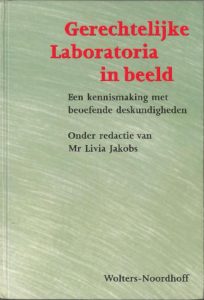
2. In 1995 I had the privilege of being allowed to initiate and draw up a book of reference [4] about forensic expertise as practiced then by the predecessors of the NFI, called ‘The Forensic Laboratories’. I distinguished at the time 31 areas of expertise, and in close cooperation with 31 experts a powerful source of knowledge was created at the service of the sitting and standing magistracy, and recommended as literature for the Police Academy.
After 25 years, in my view, it is now the right time to redefine the current conditions for a better understanding of the forensic kinds of expertise in the shape of:
A Blueprint, describing the essentials of background-knowledge, theory, practice and science, for each field of expertise.
In order to illustrate the importance of a systematic composition of a reference book and a textbook about forensic expertise, I have arranged the arguments into four groups.
A. Why? Finding reasons,
B. What? Table of contents, strengthening the beta-sciences and techniques,
C. How? Method, describing essentials in the connecting Blueprint,
D. What for? Improving the understanding of the target audiences and thus enlighten the criminal procedure.
A. Why? Finding reasons.
Signals from the Dutch criminal trials 2014-2019
From the end of 2014 to 2020 Ir. Huub Hardy [5] and myself were present at 24 heavy criminal cases in Dutch courts and tribunals [6] [Appendix 1 Dutch Criminal Cases]. We made an inventory, a close analysis and minutes of the cases. These criminal cases were selected on the basis of the role of the experts in the proceeding. In such trials, more often than not, the judicial experts were physically present and made declarations in court.
My focus in these cases was on the communication, i.e. the dialogues between experts and lawyers, as I heard them in court and saw them with my own eyes. I made notes from which lawyers’ needs in practice were found and from which lawyers’ wishes could be distilled.
In 9 of the 24 criminal trials (almost 38 %) judges, public prosecutors and barristers asked clearer literal explanations from the experts, specifically linguistic, such as: ‘no jargon please’, ‘clearer terminology’, ‘layman language please’, ‘what is the meaning of’, ‘report is hard to read’, ‘what precisely do you mean’, ‘closer explanation please’.
In 17 of the 24 criminal trials (almost 71 %) experts turned up in court. Judges, public prosecutors and barristers asked them intensively, not only about their use of language, but also, at length, about the significance of working methods and skills, and about the professional background and experience of the expert.
The lawyers, usually alpha-trained, put many probing questions to the forensic experts (who had usually been trained in beta science or in technique) such as:
* what is the background-science of this expertise?
* how do the various methods of expertise / research operate?
* how do the underlying instruments and apparatus function in this expertise?
* can you explain the difference in research on the source-level [7] and on the activity-level [8] ?
* what is the meaning of contamination [9] and secondary transfer [10] ?
* what is the background-science of this expertise ?
* explanation new – recently developed- forensic techniques?
* explanation of Bayes Theorem [11] with the use of hypotheses, formulated in the conclusions of the forensic reports,
* what is the training, the experience, the background and the CV of the expert?
Leïla Slimani – De duivel zit in de details
‘Literatuur is harder nodig dan ooit, omdat die een enorme ruimte aan vrijheid biedt waarin alles gezegd kan worden, waar je het kwaad kunt aanroeren, het gruwelijke kunt vertellen en kunt breken met de regels van moraal en fatsoen. Literatuur brengt complexiteit en ambivalentie terug in een wereld die dat verwerpt.’
In de recent verschenen, kleine essaybundel De duivel zit in de details spreekt de Marokkaans/Franse schrijver Leïla Slimani zich in zes verhalende essays uit tegen moslimterrorisme dat de wereld heeft veranderd.
In De Duivel zit in de details is de door iedereen gerespecteerde en geliefde hoogleraar Amine Moussa de hoofdpersoon. Hij is bang en somber geworden, en wordt getergd door angstaanvallen en slapeloosheid ten gevolge van de fundamentalistische islambeweging die steeds meer vat krijgt op de samenleving. Zo wordt er in de wijk een ‘brigade ter bevordering van deugd en voorkoming van ondeugd’ ingesteld en hebben moslimfundamentalisten een groep jongeren doodgeslagen omdat ze ’s avonds uitgingen en niet meededen aan het gebed, of omdat ze alcohol dronken. Tijdens de laatste dagen van de ramadan staat Moussa in de rij bij de bakkerij Nour om gevulde crêpes voor zijn vrouw te kopen. Een moslima beticht hem van roken tijdens de ramadan. Beledigingen volgen, er wordt geschermd met God. “Iemand trekt aan zijn jasje. Dan rent hij weg.”
In één van de essays, Een leger van pennen, beschrijft Leïla Slimani hoe zij, op verzoek, in het hoofd kroop van een van de jonge daders van de moordpartij bij Charlie Hebdo en een fictieve tekst probeert te schrijven. Het lukt haar niet iets op papier te krijgen, niet omdat ze te laf is, maar domweg dat ze zich niet kon overgeven aan zo’n exercitie een paar dagen na de aanslag op 7 januari 2015. Ook miste ze op dit moment, teveel aangeslagen, de onweerstaanbare, innerlijke drang het essay te schrijven.
Bijna een jaar later, op 14 november 2015, schrijft zij ‘Fundamentalisten, ik haat jullie’ en heeft ze genoeg afstand genomen om te kunnen reflecteren op het bloedbad in haar geboortestad Parijs, waarna ze eerst nauwelijks haar mening durfde te ventileren uit angst domme dingen te zeggen in ‘een wereld die al bezwijkt onder onwetendheid en haat.’ Maar wat Leïla Slimani wel weet is dat we moeten strijden voor onze vrijheid, strijden tegen de weerzinwekkende ideologie van deze moordenaars. ‘Tegen barbaren, terroristen en fundamentalisten uit welke hoek dan ook heb ik maar één ding te zeggen: Ik haat jullie.’ We moeten ons niet verschuilen achter een zogenaamd respect voor culturen, ze gaat over haar nek van hun sharia.
Leïla Slimani (1981) wordt door de fundamentalistische islam gezien als een ongelovige vrouw uit de Magreb die haar ziel heeft verkocht aan het Westen, en een misdaad heeft begaan door een roman te schrijven. Ondertussen is ze wel een van de meest spraakmakende auteurs van dit moment. Ze won de Prix Goncourt met Een zachte hand. Ze is geboren in Marokko en werd tweetalig opgevoed: Marokkaans en Frans. Ze studeerde in Frankrijk politicologie en handelswetenschappen.
Leïla Slimani – De duivel zit in de details. ISBN 9789046823231. Uitgeverij Nieuw Amsterdam, Amsterdam, 2021
Zie interview met Margot Dijkgraaf over haar boek haar boek ‘Mathilde’:
Crossing Border. On Tuesday the 16th of June, we welcomed bestselling author Leila Slimani (The Perfect Nanny, Adèle) for a free online BorderKitchen. She was interviewed by Margot Dijkgraaf about her new book, Mathilde. At the end of the interview, viewers had the opportunity to ask questions to the author and human rights activist.
About Mathilde: 1946. The young, French, Mathilde falls head over heels for Amine, a Moroccan officer of the French army. They get married and leave for a secluded family farm, hours from Rabat. How can their love, which is constantly being tested, stand the test of time? Mathilde is the first part of the ‘The Land of the Others’-trilogy. The story was based on her family history and entered the French bestseller charts at number one. Leila Slimani (Morocco, 1981) is the bestselling author of The Perfect Nanny, winner of the Prix Goncourt, and Adèle, for which she won the La Mamounia Prize. Thank you to Uitgeverij Nieuw Amsterdam.
Linda Bouws – St. Metropool Internationale Kunstprojecten
Chomsky And Pollin: A Global Green New Deal Is The Only Way To Avert Disaster
Global warming is the biggest challenge facing humanity today. Yet, climate change has yet to become our number one priority even though, as the World Meteorological Organization warned back in March 2020, “time is fast running out” on averting an acute environmental catastrophe.
In this context, a comprehensive Green New Deal is urgently needed to be put into action. A Global Green New Deal. And, hopefully, the incoming Biden administration will not squander the opportunity to have the U.S. take the lead on climate emergency now that the Senate is under Democratic control.
In the interview that follows, Noam Chomsky and Robert Pollin explain the urgency of undertaking ambitious efforts to respond globally to the existential crisis of climate change within the context of a just transition to a green economy. Chomsky and Pollin are joint recipients of the 2020 Climate Courage Award granted by the Climate Change Leadership Institute for their book Climate Crisis and the Global Green New Deal and its articulation of “a global solution that is not only bold and viable but also replete with the need for a just transition.”
C.J. Polychroniou: Noam, the outgoing Trump administration was the worst thing that could have happened for the environment. Trump rolled out dozens of deregulation policies. His administration reversed the Obama-rule on methane emissions, even though methane, the natural ingredient in natural gas, is 84 times more potent than carbon dioxide. Meanwhile he denied the science of climate change and withdrew the United States from the Paris climate agreement. What can we expect from the Biden administration on climate emergency, especially now that the Senate is under Democratic control, and why is it so important that the U.S. should rejoin the Paris Agreement?
Noam Chomsky: Rejoining the Paris Agreement is imperative, but only a bare beginning. The Agreement was an important step forward. It is, however, very weak, not even close to what has to be done. It also has no teeth: it is voluntary, no binding commitments. The primary reason for the weakness is the U.S. Republican Party, which would not permit anything that went much beyond symbolism. The Party is still there. In fact, it just achieved overwhelming success in the November 2020 elections, winning at every level except for the White House, where distaste for Trump’s antics prevailed. That victory is quite astonishing if only in light of the fact that the Party’s leaders were responsible for killing tens if not hundreds of thousands of Americans in the preceding months — not to speak of racing to the abyss of environmental catastrophe, a fact that scarcely registered.
The Party is still there, a dominating force, poised to ensure that the country is ungovernable, a specialty of Senate Republican leader Mitch McConnell as he proclaimed with pride during the Obama years and demonstrated with considerable success.
And Trump is not gone, far from it. A large majority of the Republican voting base regards him as their leader, if not savior. They can be whipped up to threaten any Republican office holder who dares to depart from Trump-McConnell malevolence, much as the Tea Party was organized and used for that purpose, with plenty of funding from powerful concentrations of capital. It may be recalled that as recently as 2008, during the McCain campaign, Republicans were willing to entertain the thought that there might be some problem about destroying the climate that sustains life. With virtual unanimity, they succumbed to a juggernaut launched by David Koch to extirpate that heresy, a victory that remains in place. With Trump setting himself up as the “true victor” in the elections, stirring up poisons in the ways he masters very well, there will be serious barriers to returning the country to a moderately civilized course.
How serious the barriers are we saw right before our eyes on January 6, a fateful day.
Ever since he gained office, Trump has been working hard to turn the country into a tin-pot dictatorship under his rule, a process we have been discussing regularly in this forum as it has unfolded.
To repeat briefly, there have been three prongs to the assault against the world by this miserable creature:
1. Destroying the environment that sustains life
2. Sharply increasing the threat of terminal nuclear war;
3. Dismantling formal democracy.
The first one alone suffices to establish him as arguably the most dangerous political figure in human history, a truism that has been hard for many to contemplate.
Right now we are witnessing the next step in his dedication to destroy American democracy. He has been bragging for years about the “Tough Guys for Trump” — his Black and Brown Shirts.
On January 6, he unleashed them, encouraging their violence and destruction as they broke into the Capitol Building to prevent formal ratification of his electoral defeat, which, it seems, he will never acknowledge no matter how much destruction is caused by his malevolence.
In his disgraceful performance calling on his tough guys to go home — for now — he could not refrain from stirring up more poisons with brazen lies about how his “landslide victory” was stolen by evil forces, doing what he can to ensure maximum damage to the country to which he intends to return triumphantly to complete the wreckage.
